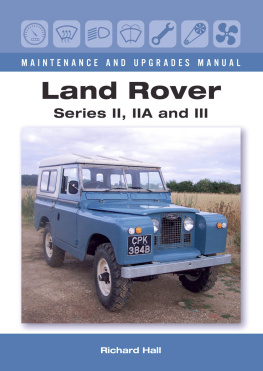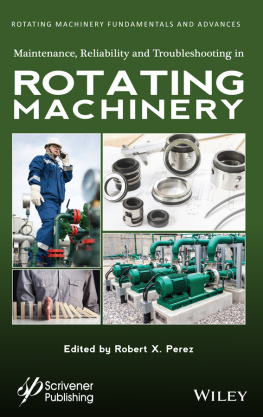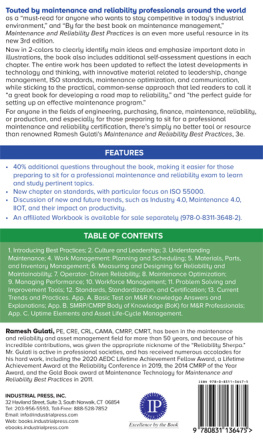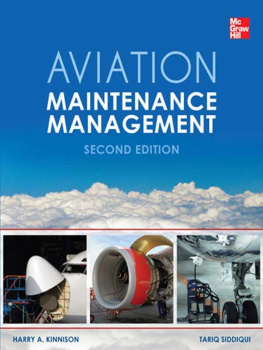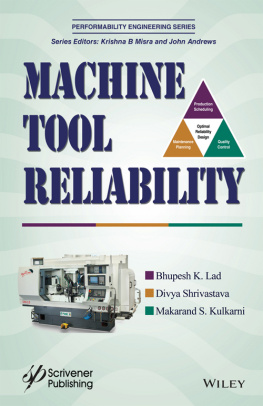Contents
Page List
Guide

SECOND EDITION
PRODUCTIVITY AND RELIABILITY-BASED MAINTENANCE MANAGEMENT
SECOND EDITION
PRODUCTIVITY AND RELIABILITY-BASED MAINTENANCE MANAGEMENT
MATTHEW P. STEPHENS
PURDUE UNIVERSITY PRESS WEST LAFAYETTE, INDIANA
Copyright 2004, 2010, 2022 by Matthew P. Stephens. All rights reserved.
Printed in the United States of America.
Cataloging-in-Publication data on file at the Library of Congress.
978-1-61249-749-5 (paperback)
978-1-61249-750-1 (epub)
978-1-61249-751-8 (epdf)
This publication is protected by copyright and permission should be obtained from the publisher prior to any prohibited reproduction, storage in a retrieval system, or transmission in any form or by any means, electronic, mechanical, photocopying, recording, or likewise. For information regarding permission(s), write to: Purdue University Press
Supplementary instructional materials are available for this book. To obtain these, authorized instructors should contact Professor Matthew P. Stephens at the School of Engineering Technology, Purdue University.
ad majorem Dei gloriam
To Ethan
To SED
Contents
About the Author
Dr. Matthew P. Stephens is a professor in the School of Engineering Technology at Purdue University, where he conducts his research and teaches courses in total productive maintenance management (TPM), facilities planning, statistical quality control, and design of experiments (DOE). Professor Stephens holds undergraduate and graduate degrees from Southern Illinois University and the University of Arkansas, with specialization in operations management and statistics.
Prior to joining academe, Dr. Stephens spent nine years with several manufacturing and business enterprises, including flatbed trailer and washer and dryer manufacturers. He also has been extensively involved as a consultant with a number of major manufacturing companies.
Professor Stephens has numerous publications to his credit in the areas of productivity and quality improvements and lean production systems. He is the author of Manufacturing Facilities Design and Material Handling, 6th ed. (Purdue University Press, 2019). Dr. Stephens has served various professional organizations including the Association of Technology, Management, & Applied Engineering (ATMAE), and the American Society for Quality (ASQ) where he attained his training in CQE and Six Sigma.
Preface
Productivity and Reliability-Based Maintenance Management is intended to provide a strong yet practical foundation for understanding the concepts and practices of total productive maintenance (TPM) managementa proactive asset and resource management strategy that is based on enhancing equipment reliability and overall enterprise productivity. The book is intended to serve as a fundamental yet comprehensive educational and practical guide for departing from the wait-failure-emergency repair cycle that has plagued too many industries and advancing to a proactive and productive maintenance strategy. It is not intended to be a how-to-fix-it manual but instead emphasizes the concept of a world-class maintenance management philosophy to avoid the failure in the first place.
This book serves to fill an immense void in the instructional needs of technology students at all levels. Universities, junior and community colleges, and technical institutes as well as professional, corporate, and industrial training programs can benefit by incorporating these fundamental concepts in their technical and managerial curricula. It can serve as a powerful educational tool for students as well as for maintenance professionals and managers.
In , various types of maintenance organizations and practices are defined and discussed. Through a realistic cost-and-benefit approach, the book introduces the reader to the basic concepts of productivity through proactive maintenance management practices.
The introductory chapter is followed by a discussion of equipment life expectancy, expected failure rates, and the general concepts of reliability in . Basic statistical models and distributions necessary for understanding reliability issues also are discussed. The author embraces the philosophy that concepts, simple or complex, are best appreciated by the reader when they are presented in a clear and easy-to-understand manner. Therefore, all mathematical presentations are reduced to the simplest form.
. Strong emphasis is placed on operator and employee education, empowerment, and ownership of equipment and processes.
Other important and relevant failure prevention and productivity improvement topics such as benchmarking; cause and effect, root cause analysis; fault tree; and failure mode and effect analysis (FMEA) are presented in .
Relevant and real-world case studies are used in most chapters in the Case in Point features, in order to highlight the importance of sound and proactive maintenance practices. End-of-chapter questions summarize and solidify the concepts that are presented in each chapter.
Acknowledgments
I would like to express my gratitude to all the people who have guided me, encouraged me, and shared their wisdom along this journey. I am grateful to organizations and corporations who have generously provided me with state-of-the-art information and technologies to make this book a valuable tool in the field of TPM. I would like to thank Dr. Edie K. Schmidt and her father, Dr. Donald L. Schmidt, for their expertise and contributions in the chapter about project management. My thanks to Dr. Maximo Ortega, for his example in PM cost analysis and his contributions in development of the instructors manual. With gratitude, I would like to acknowledge the contribution of Everett Barry, Jr., Ritwik Pandey, Hoaran Zhou, and Net Suwanmungkool to data collection on Civil Aviation accidents. A great note of gratitude goes to my dear friends and colleagues: Dr. Brittany Newell for her expertise and contributions in the area of Machine Learning (ML); Dr. Gaurav Nanda for his expert knowledge and contribution on Industry 4.0 and AI on the subject matters; and Dr. Kenneth A. Burbank, SoET Department Head, for his leadership and support. I would like to thank Purdue University Press and, in particular, Ms. Katherine M. Purple for her tireless editorial work.
Introduction
OVERVIEW
OBJECTIVES
At the completion of the chapter, students should be able to
- Define maintenance.
- Develop a basic understanding of the role of maintenance in profitability and productivity.
- Understand the primary and secondary goals of maintenance.
- Identify the three types of maintenance activities.
- Develop a basic understanding of TPM.
- Explain the different ways to organize the maintenance department effectively.
1.1 INTRODUCTION TO MAINTENANCE MANAGEMENT
In todays global economy with fierce competition to attain and maintain the competitive edge in productivity and quality, a key factor often is neglected. The planning and managing of productive maintenance activities in industrial and manufacturing organizations rarely are given the attention they deserve. Whereas industrial managers and corporate leaders fully realize the importance of investment in the latest technologies for quality and productivity improvements, the maintenance of the equipment and technologies does not seem to enjoy the same level of attention and priority. It is ironic that the increased complexity and automation of plant equipment highlights the need for highly skilled maintenance personnel and specialized planning, training, and development of programs for maintenance activities.



